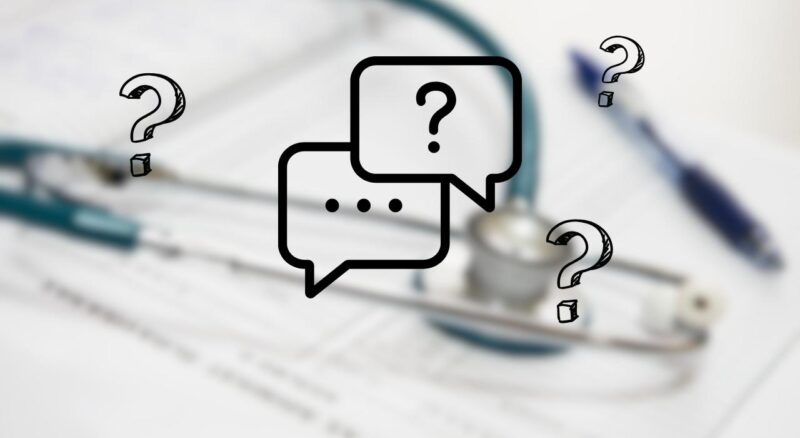The world of healthcare is in constant flux, adjusting to emerging technologies and changing patient needs. One transformation that’s captured significant attention lately is the rise of telehealth services.
While telehealth is making waves in terms of convenience and patient care, it’s also causing a seismic shift in medical billing procedures. One such change is the use of billing Modifiers, specifically the GQ Modifier. But what exactly is this Modifier, and how does it impact both healthcare providers and patients?
This comprehensive blog post aims to shed light on this crucial topic so you can make the most of these services, whether you’re a healthcare provider or a patient seeking remote care. We’ll explore what the GQ Modifier is, why it’s significant, and the do’s and don’ts of using it. Let’s begin.
The Basics

Modifier GQ is a billing code used in the United States to indicate that a medical service was performed through “asynchronous telecommunications systems”. Essentially, it means that the healthcare provider and the patient didn’t need to interact in real-time like they would in traditional telehealth consultations.
Instead, the patient can submit their medical data, and the healthcare provider can review it later to provide a diagnosis and treatment plan. It’s vital for coding non-interactive, store-and-forward telemedicine services accurately.
How is it Different from GT and 95 Modifiers?
You might be wondering how Modifier GQ is different from other telehealth Modifiers like GT and 95. Well, the primary difference lies in the type of service. Modifier GT signifies “interactive audio and video telecommunications,” meaning the service is provided in real-time.
Modifier 95 is similar but is often used to indicate synchronous telehealth services provided via a secure platform compliant with healthcare standards. It is specifically for asynchronous services—those where real-time interaction isn’t a requirement.
Implications of Using

1. For Providers
The use of Modifier GQ has several implications for healthcare providers. First and foremost, it expands the scope of services that can be offered remotely.
Providers can now give expert consultations based on lab reports, X-rays, or other diagnostic data without scheduling a real-time appointment. Additionally, it allows them to:
- Manage time more efficiently by reviewing cases at their convenience.
- Increase patient reach, especially those in remote areas.
- Potentially boost revenue by offering additional services.
2. For Patients
From a patient perspective, Modifier GQ offers flexibility and convenience. It allows individuals, especially those living in remote areas, to receive quality healthcare without having to travel long distances.
This is particularly beneficial for follow-up consultations or reviewing test results, where real-time interaction may not be essential. The benefits include:
- Less time spent on scheduling and attending real-time appointments.
- Reduced travel costs and related inconveniences.
- Faster access to healthcare providers for routine or follow-up care.
How to Correctly Apply It

Step-by-Step Guide
Correctly applying Modifier GQ can be a daunting task, especially if you’re new to medical billing. Follow these steps to ensure you’re doing it right:
- Identify the Service: Make sure that the service being provided falls under asynchronous telehealth services.
- Check Eligibility: Not all medical services can be billed with a GQ Modifier. Refer to CMS or your insurance provider’s guidelines.
- Enter the Code: On your claim form, append the Modifier GQ to the CPT code representing the service being offered.
- Documentation: Keep thorough records to prove that the service was indeed asynchronous and falls under the guidelines for using Modifier GQ.
Common Mistakes to Avoid
When using Modifier GQ, healthcare providers often make some common mistakes that could lead to claim denials or delays. Here are some pitfalls to steer clear of:
- Incorrectly Identifying the Service Type: Ensure you’re not confusing asynchronous with synchronous services.
- Insufficient Documentation: Inadequate or unclear documentation is a common reason for claim rejections.
- Failure to Check Insurance Policies: Always refer to the individual insurance provider’s policies, as they can differ.
Case Studies
In a constantly evolving healthcare landscape, it’s essential to understand not just the ‘what’ but also the ‘why’ behind various billing Modifiers. Modifier GQ is not just a billing code; it represents a shift in the way healthcare can be delivered and accessed.
It promotes a model that can save time and resources, allowing healthcare providers to attend to more patients and focus on those requiring immediate attention.
Practical Examples
Let’s dive into some real-world scenarios to see how Modifier GQ has been effectively applied:
- Remote Radiology Reviews: A patient in a rural area gets an X-ray done at a local clinic. The X-ray is digitally sent to a specialized radiologist in a city, who reviews it and sends back a diagnosis. It is used to bill for this asynchronous service.
- Psychiatric Evaluations: A patient fills out a detailed questionnaire and sends it to a psychiatrist, who reviews the answers and provides a comprehensive treatment plan later. Again, it would be the correct billing code here.
- Chronic Disease Monitoring: A patient with diabetes sends weekly glucose readings to their doctor, who reviews them at a later time and adjusts medication accordingly. This is another perfect application for Modifier GQ.
Future of Modifier GQ in Telehealth

The Growing Trend
The increasing adoption of telehealth services has a domino effect on billing practices, particularly regarding Modifier GQ. As more providers become comfortable with asynchronous telehealth services, the utilization of Modifier GQ is expected to rise significantly. This growth is bolstered by:
- Increasing internet penetration, even in remote areas.
- Advancements in medical technology facilitate better remote diagnoses.
- Changing patient behavior and increasing acceptance of telehealth.
Policy Implications and Updates
Modifier GQ isn’t static; it is subject to changes in healthcare regulations and insurance policies. Being aware of the latest updates is crucial for healthcare providers to avoid claim denials and stay compliant. It’s essential to:
- Regularly check CMS updates or private insurance policy changes related to Modifier GQ.
- Engage in continuous education programs to keep up-to-date with the billing landscape.
- Utilize industry-specific newsletters, blogs, or forums to remain in the loop on the latest news and updates on Modifier GQ.
FAQs

1. What types of Healthcare Providers Are Eligible to Use Modifier GQ?
Healthcare providers who offer telehealth services that are asynchronous can make use of it. This could include general practitioners, specialists like cardiologists and dermatologists, and even mental health professionals.
However, the specific eligibility criteria can vary depending on state regulations and the insurance provider’s guidelines.
2. Is Modifier GQ Applicable to International Telehealth Consultations?
It is generally used within the United States healthcare system, specifically for coding and billing practices related to insurance providers that operate under American regulations. Therefore, it is not commonly used for international telehealth consultations.
However, some international healthcare providers may adopt similar billing codes, but that is subject to the laws and regulations of the respective country.
3. Do Medicare and Medicaid Recognize Modifier GQ?
Medicare and Medicaid have their own sets of rules and conditions when it comes to telehealth services. Modifier GQ may or may not be recognized depending on specific program guidelines, which are subject to change.
Always consult the latest Medicare or Medicaid guidelines for the most current information on telehealth billing.
4. Can It Be Used for Telehealth Group Sessions?
It is primarily designed for individual, asynchronous consultations. If you’re looking to bill for group sessions conducted via telehealth, there might be other appropriate billing codes and Modifiers to use.
It is crucial to consult with your billing department or refer to the most up-to-date billing guidelines for accurate information.
5. How Do I Know if My Telehealth Platform Supports Modifier GQ Billing?
The telehealth platform you are using should provide details on billing features, including the types of Modifiers it supports. If you can’t find this information readily available, reach out to their customer service or technical support to confirm whether it is supported for billing through their system.
6. Can I Use It For Emergency Consultations?
It is typically not used for emergency consultations as it is designated for asynchronous telehealth services.
Emergency cases usually require real-time interaction between healthcare providers and patients for immediate diagnosis and treatment, making Modifier GQ unsuitable for such instances.
Final Words
Understanding and appropriately using Modifier GQ is crucial for healthcare providers offering asynchronous telehealth services. It not only ensures accurate billing but also opens up new avenues for providing flexible, timely healthcare services to a broader patient population.
With this comprehensive guide, you should be well on your way to becoming a Modifier GQ expert.

